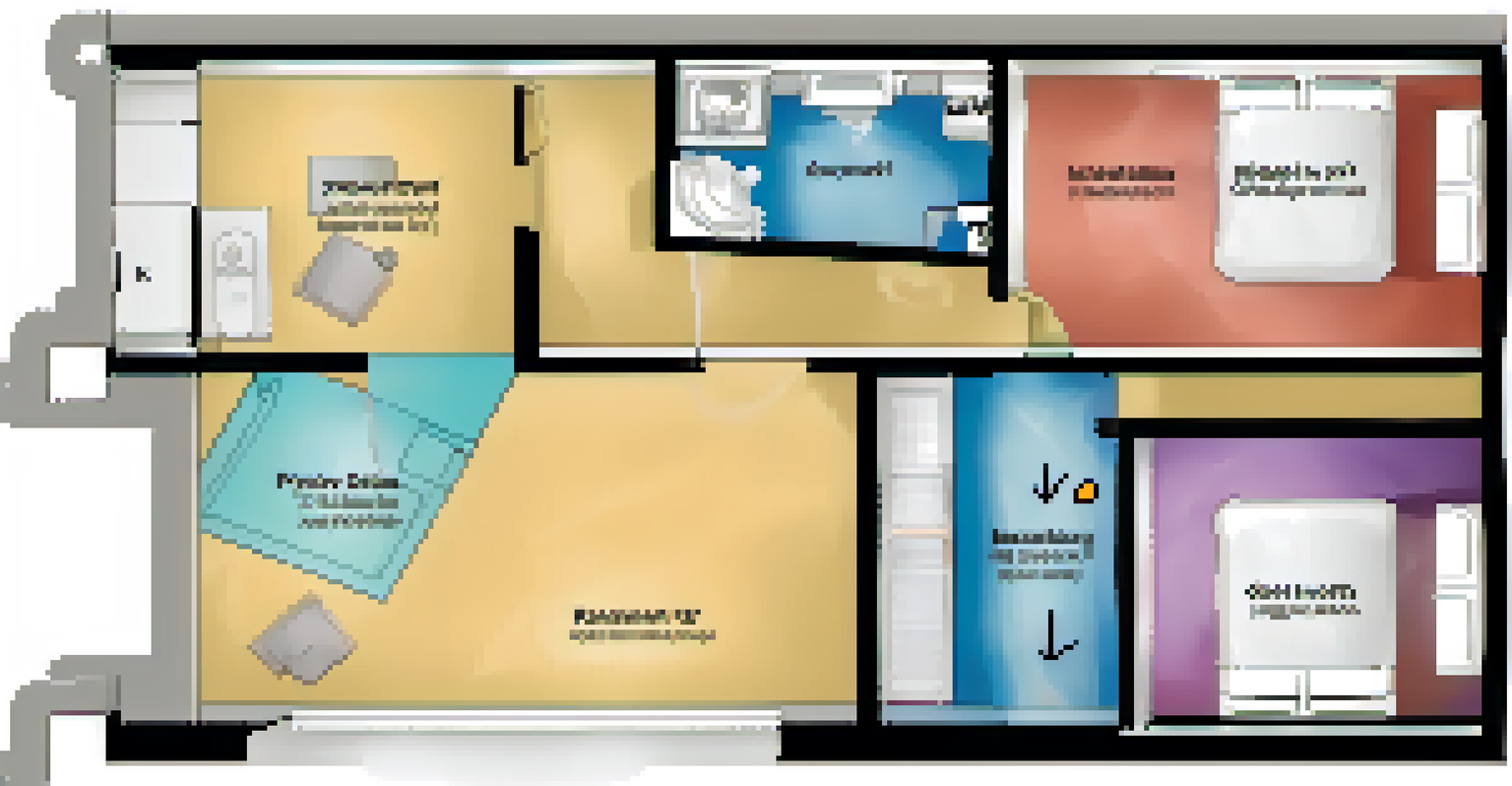Carbon Monoxide Detectors: A Home Safety Must-Have

Understanding Carbon Monoxide and Its Dangers
Carbon monoxide (CO) is a colorless, odorless gas that can be deadly. Produced by burning fossil fuels, it can seep into homes from various appliances, such as gas stoves and heaters. Without proper detection, CO can accumulate silently, putting you and your loved ones at risk.
Carbon monoxide is a silent killer. It sneaks up on you and can take your life before you even realize it's there.
The danger lies in its ability to go unnoticed until it's too late. Common symptoms of CO poisoning include headaches, dizziness, and confusion, which can easily be mistaken for other illnesses. This is why having a reliable detection system in place is crucial for your home’s safety.
By understanding the risks associated with carbon monoxide, you empower yourself to take the necessary precautions. Awareness is the first step toward ensuring a safe living environment, making it vital for every homeowner to recognize the importance of CO detectors.
Why Every Home Needs a Carbon Monoxide Detector
Having a carbon monoxide detector in your home is not just a good idea; it's essential. These devices serve as your first line of defense against potential poisoning, alerting you to dangerous levels of CO in real-time. This early warning can mean the difference between life and death.

In many regions, installing CO detectors is even mandated by law, reflecting their critical role in home safety. Insurance companies may also offer discounts for homes equipped with these detectors, highlighting their importance not just for safety but also for financial peace of mind.
Carbon Monoxide is a Silent Killer
This colorless, odorless gas can accumulate in homes without detection, posing serious health risks.
Ultimately, a carbon monoxide detector is a small investment that can yield significant returns in terms of safety. It's a simple step that every homeowner should take to protect their family and ensure a secure living space.
Types of Carbon Monoxide Detectors Available
When it comes to choosing a carbon monoxide detector, you'll find several types available, each designed to fit different needs. The most common are battery-operated detectors, which are easy to install and can be placed anywhere in your home. Alternatively, hardwired models connect directly to your home's electrical system, providing a continuous power source.
An ounce of prevention is worth a pound of cure.
Some detectors come with additional features, such as digital displays that show CO levels or combination units that also detect smoke. This multifunctionality can save space and provide comprehensive safety measures in one device.
Selecting the right type of detector for your home is essential. Consider factors like your home's layout, existing safety systems, and personal preferences to determine which option suits you best.
Where to Install Carbon Monoxide Detectors
Installing carbon monoxide detectors in the right locations can significantly enhance their effectiveness. It's recommended to place them outside sleeping areas and on every level of your home, including the basement. This ensures that everyone in the household can be alerted in case of an emergency.
Avoid putting detectors too close to fuel-burning appliances; this can lead to false alarms. Instead, position them at least 15-20 feet away from these sources to minimize any potential interference.
Install Detectors for Safety
Having carbon monoxide detectors is essential for early warning and can even be mandated by law in some areas.
Remember, the goal is to ensure that the detectors can function optimally while also being easily accessible for maintenance checks. Taking the time to install them correctly can save lives.
Maintaining Your Carbon Monoxide Detectors
Just installing carbon monoxide detectors isn't enough; regular maintenance is key to ensuring they work when you need them most. Start by testing your detectors monthly to confirm they are operational. Most models have a test button that makes this process simple.
Additionally, replace the batteries at least once a year, or whenever the low-battery alert sounds. If you have a hardwired detector, it’s still wise to check the backup battery, as power outages can occur unexpectedly.
Finally, remember that detectors have a lifespan, typically around 5 to 7 years. Be sure to replace them when they reach the end of their life to maintain maximum safety in your home.
Recognizing the Signs of Carbon Monoxide Poisoning
Being aware of the signs of carbon monoxide poisoning can save lives. Early symptoms often mimic those of the flu, including headaches, dizziness, and nausea. If you or family members experience these symptoms, especially when using fuel-burning appliances, it's crucial to act quickly.
If you suspect CO poisoning, exit the home immediately and get to fresh air. Call emergency services to report the situation and have your home inspected. It's better to err on the side of caution when it comes to carbon monoxide exposure.
Regular Maintenance is Crucial
Routine testing and timely replacement of carbon monoxide detectors ensure they function effectively and keep your family safe.
Understanding these symptoms can empower you to respond effectively. Keeping your family informed can help ensure everyone knows what to look for and how to react in an emergency.
Conclusion: Prioritizing Home Safety with Carbon Monoxide Detectors
In conclusion, carbon monoxide detectors are an essential component of home safety. They provide peace of mind, allowing you to focus on what truly matters—your family. By understanding the dangers of carbon monoxide and committing to proper installation and maintenance, you can create a safer living environment.
Remember, safety is an ongoing responsibility. Regularly check your detectors, be alert to the signs of CO poisoning, and educate your family about these risks. This proactive approach ensures that everyone in your home remains protected.

Ultimately, investing in carbon monoxide detectors is an investment in your family's safety. Make it a priority today, and rest easy knowing you're taking steps to safeguard your loved ones.